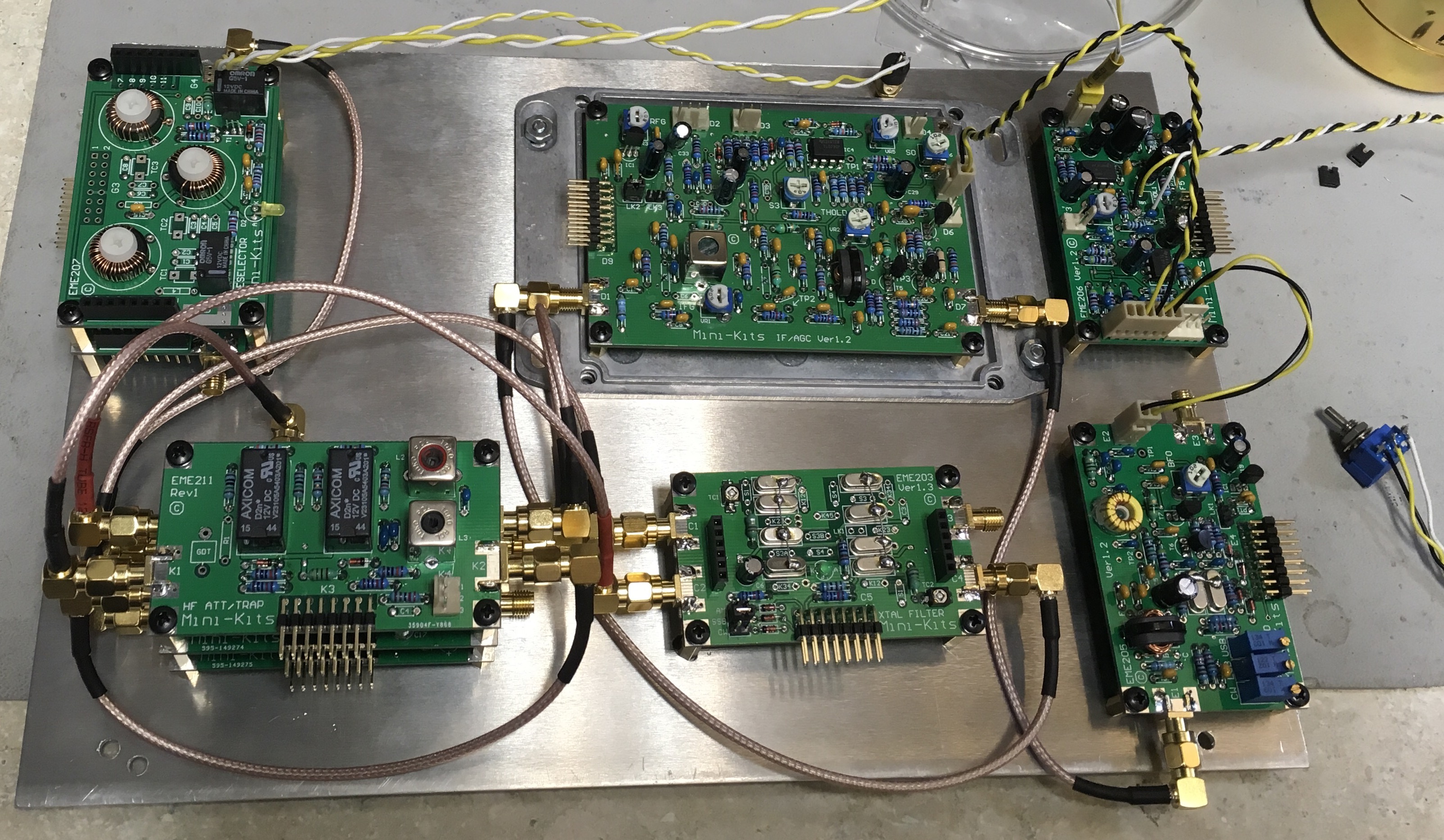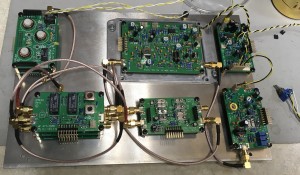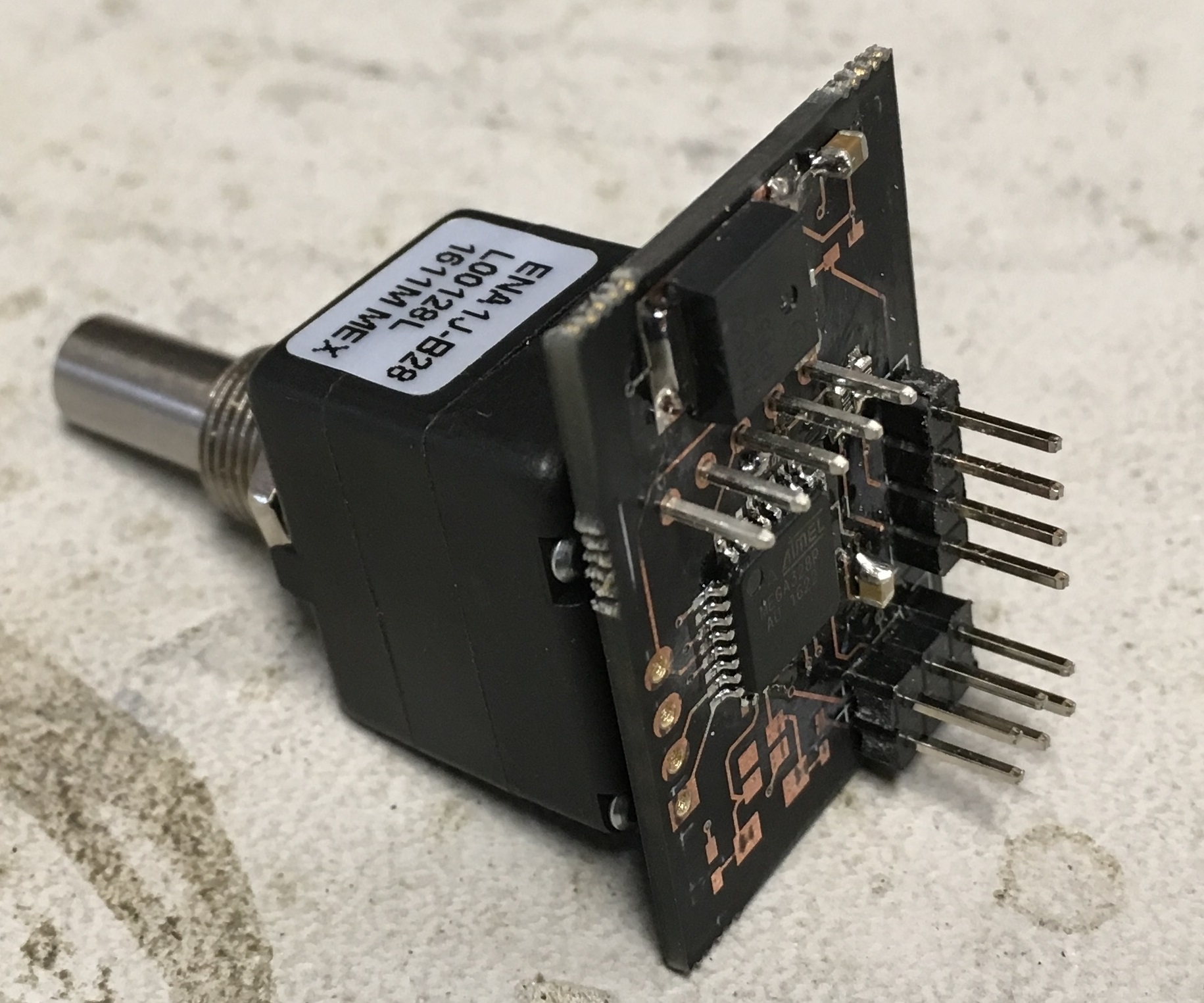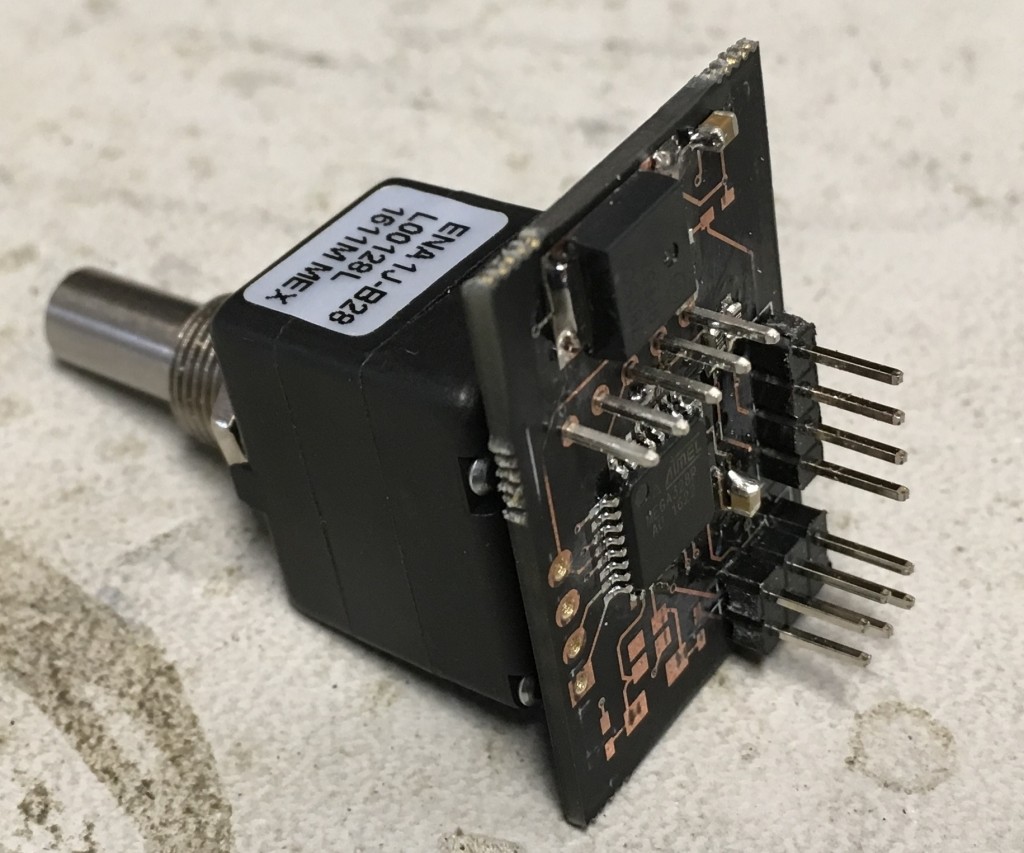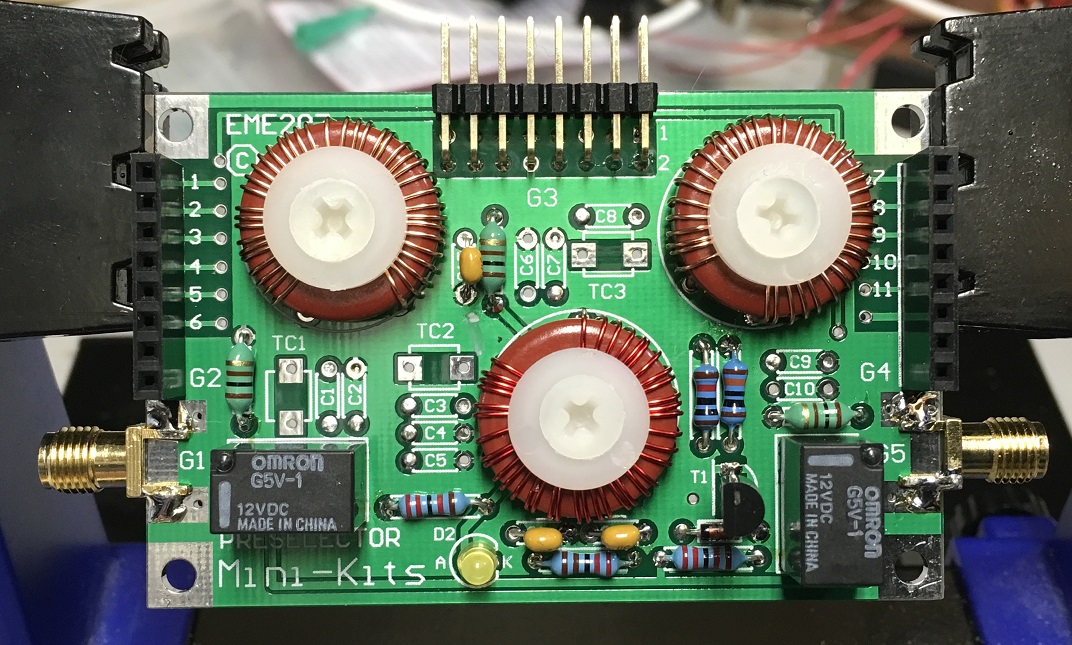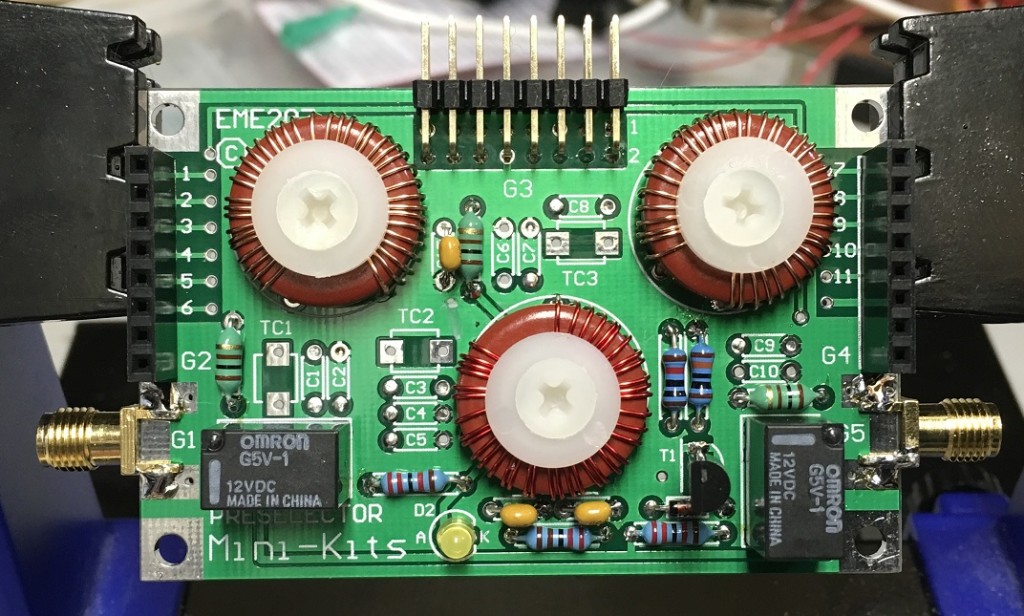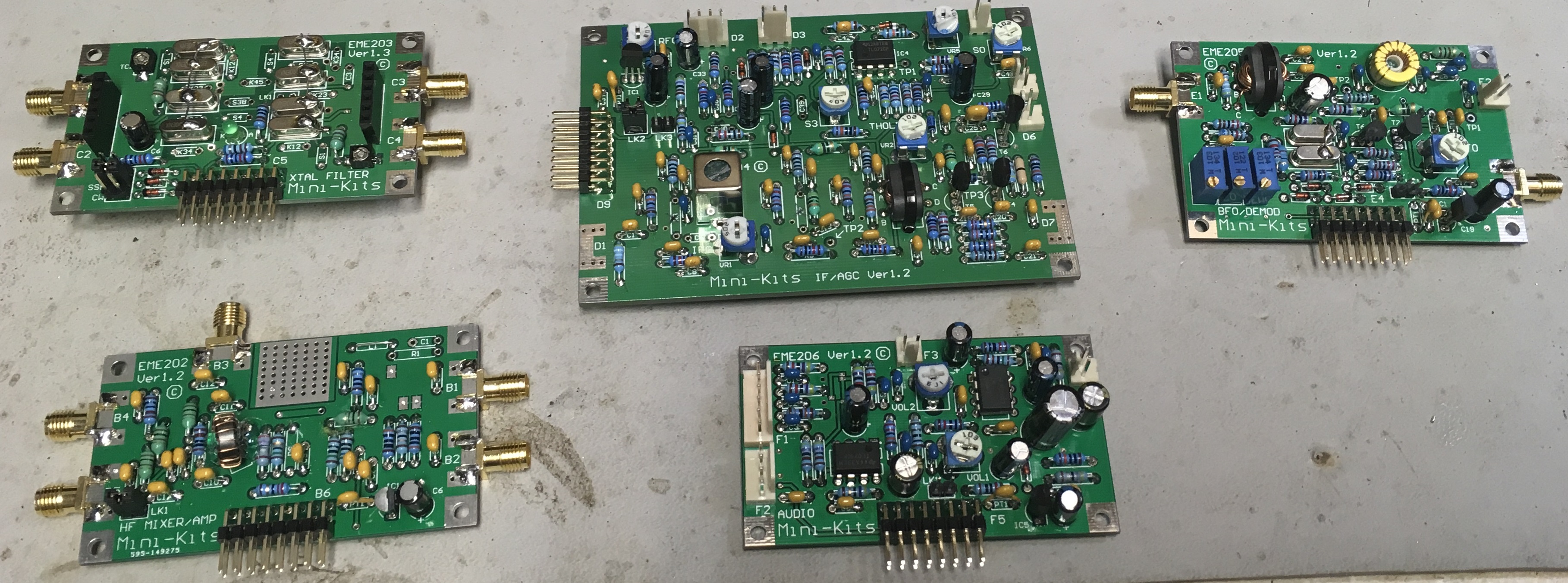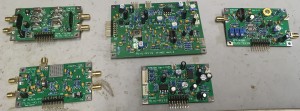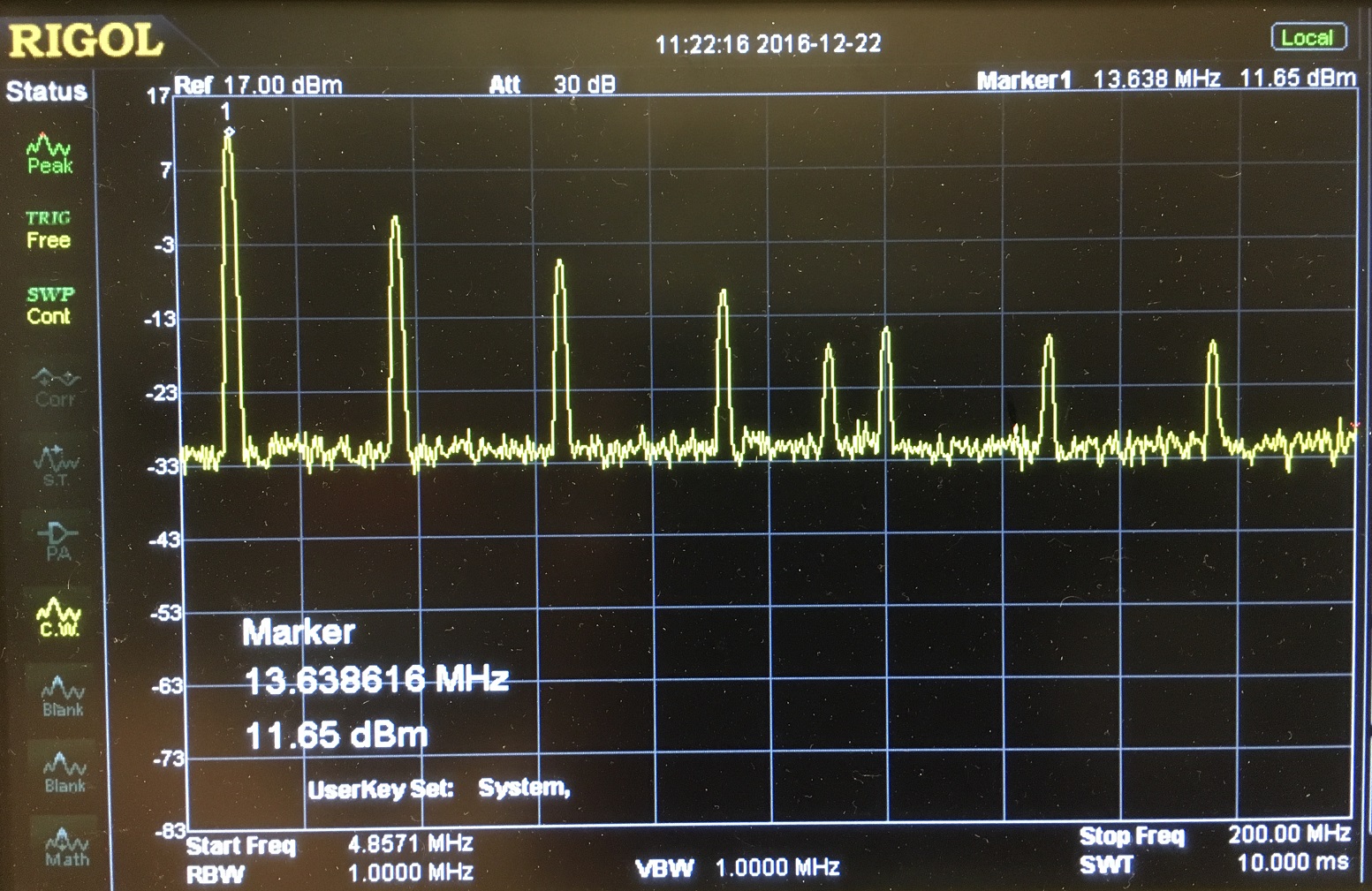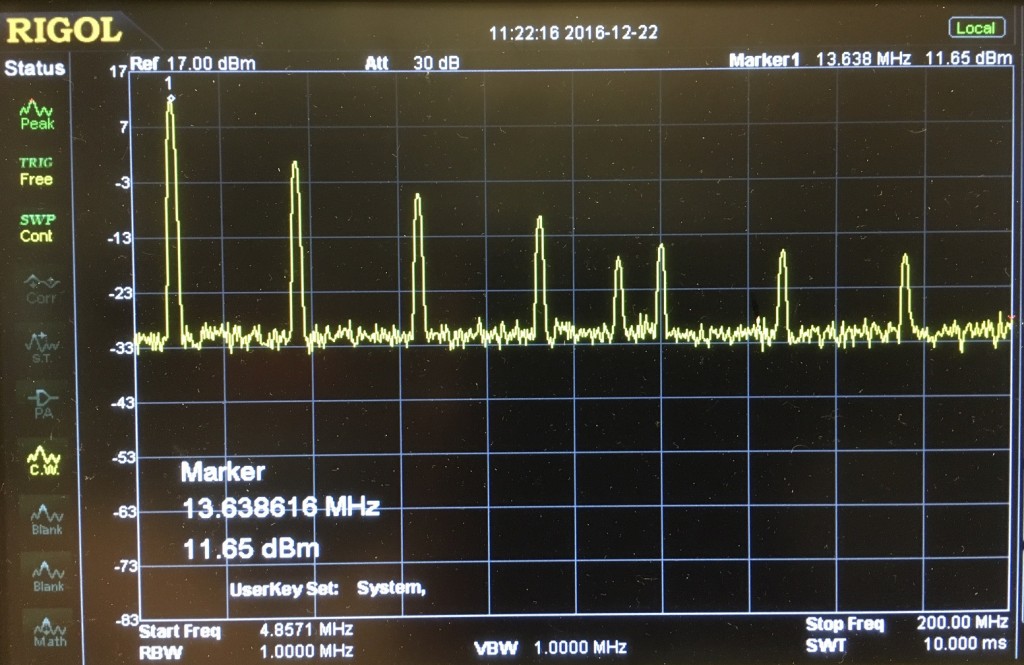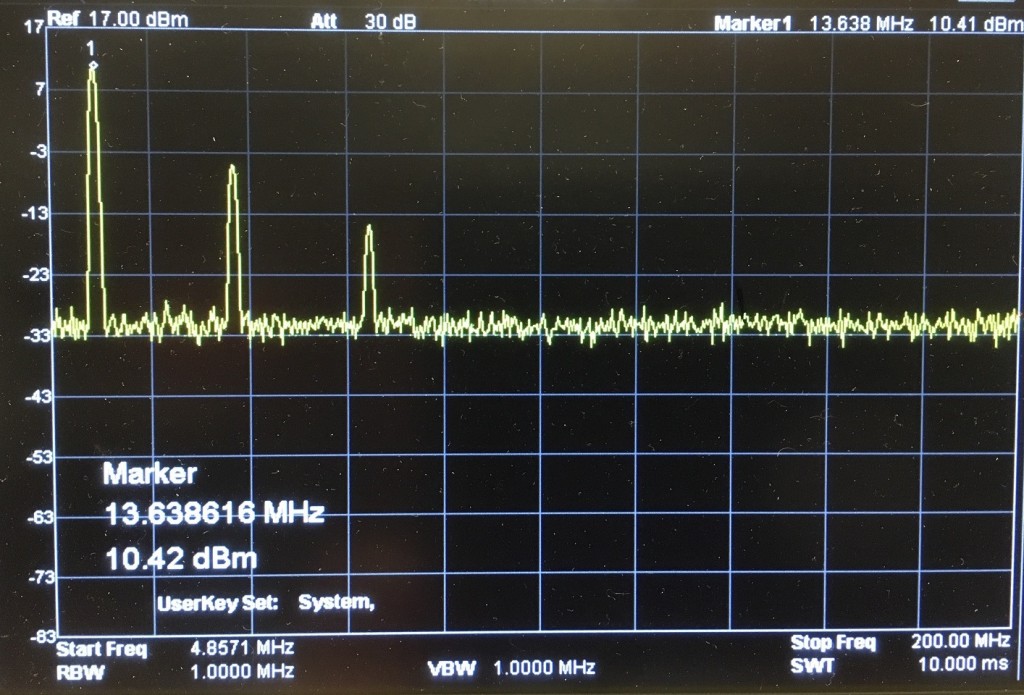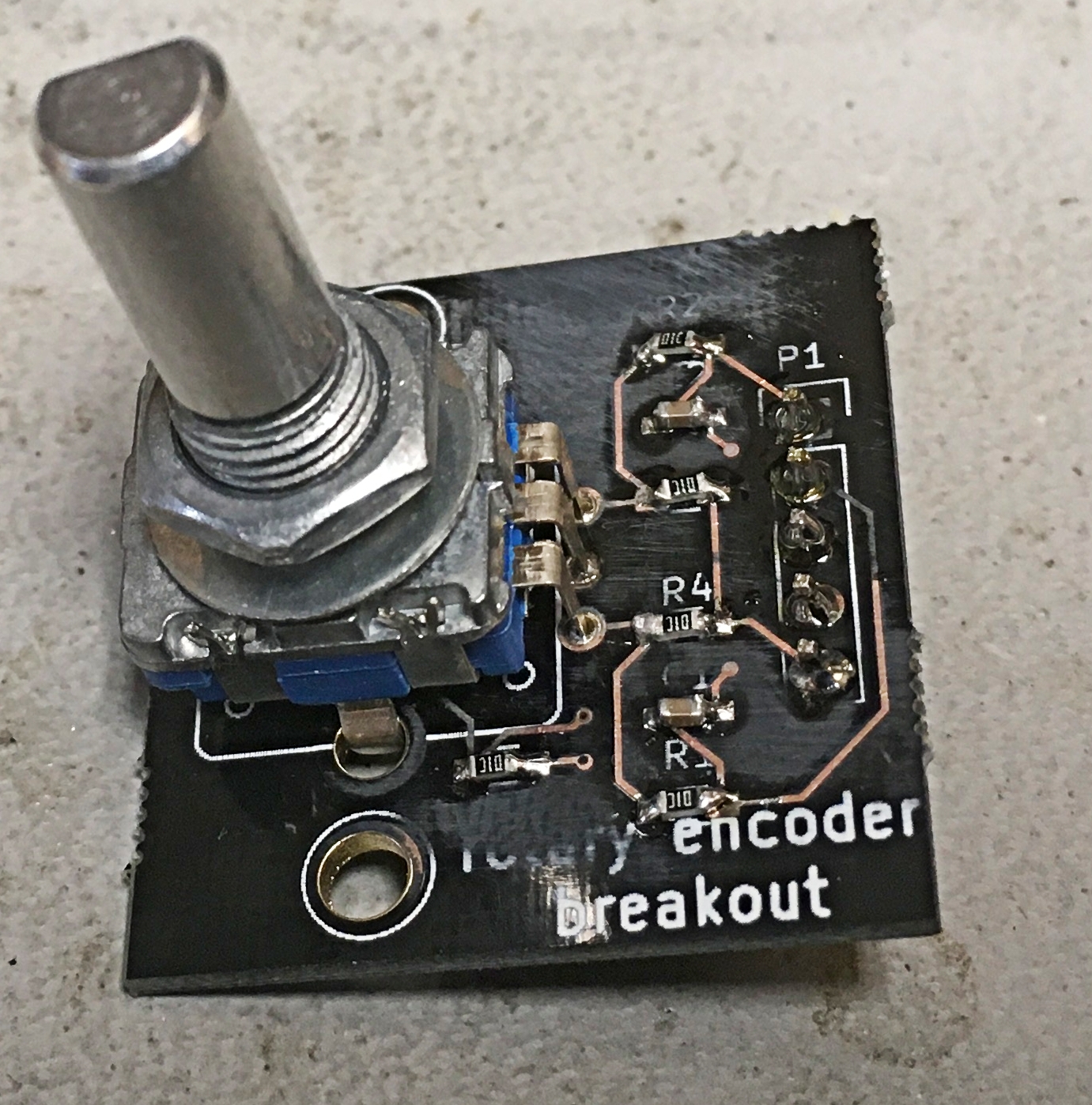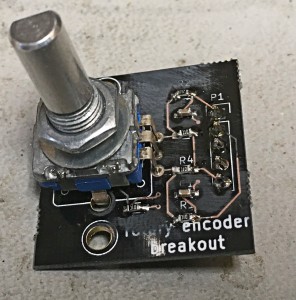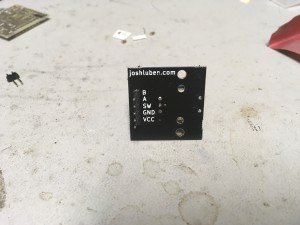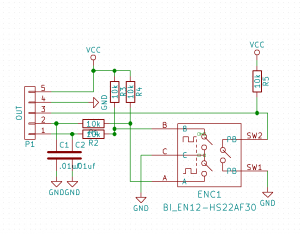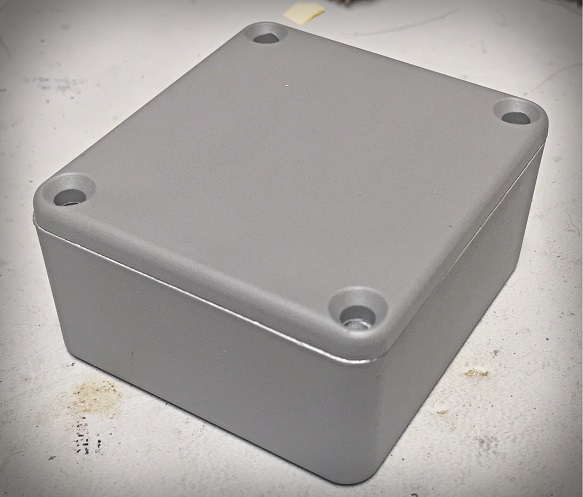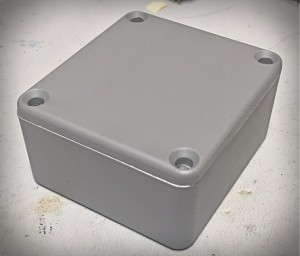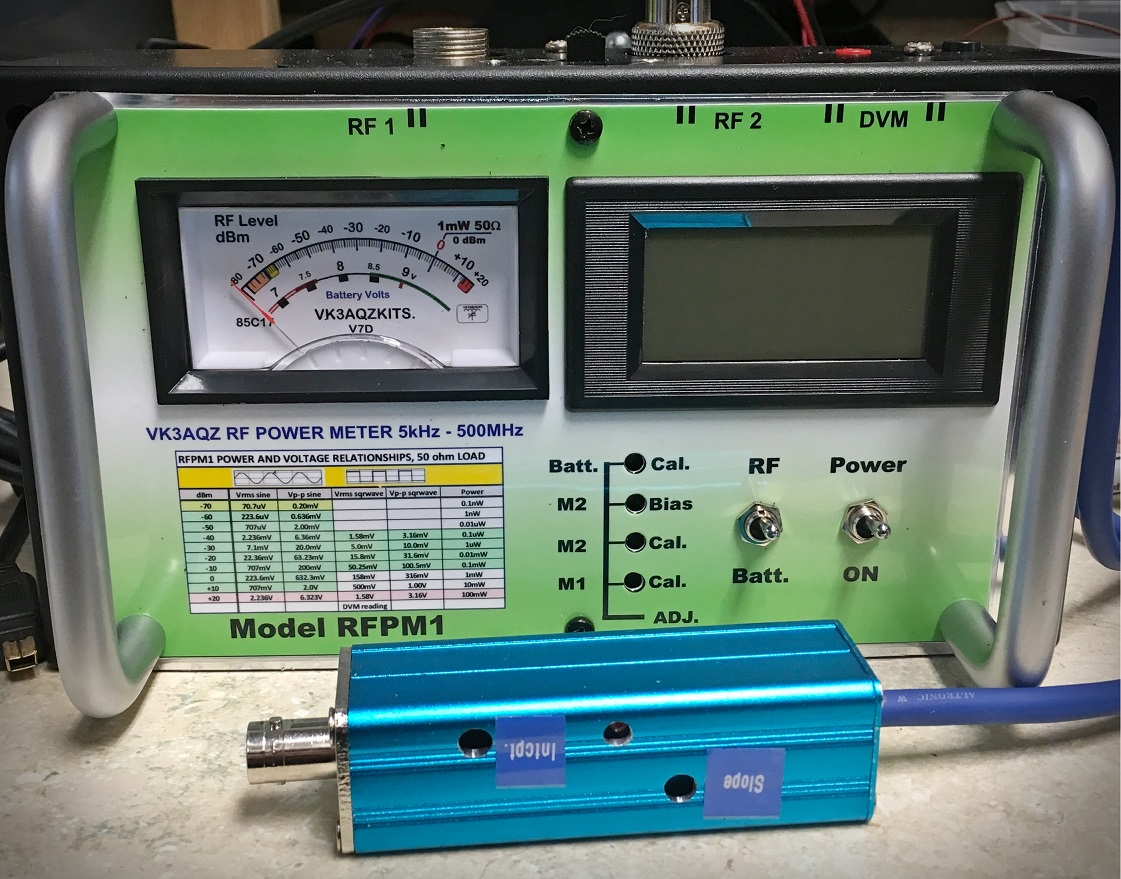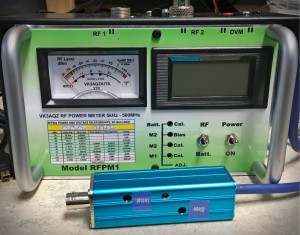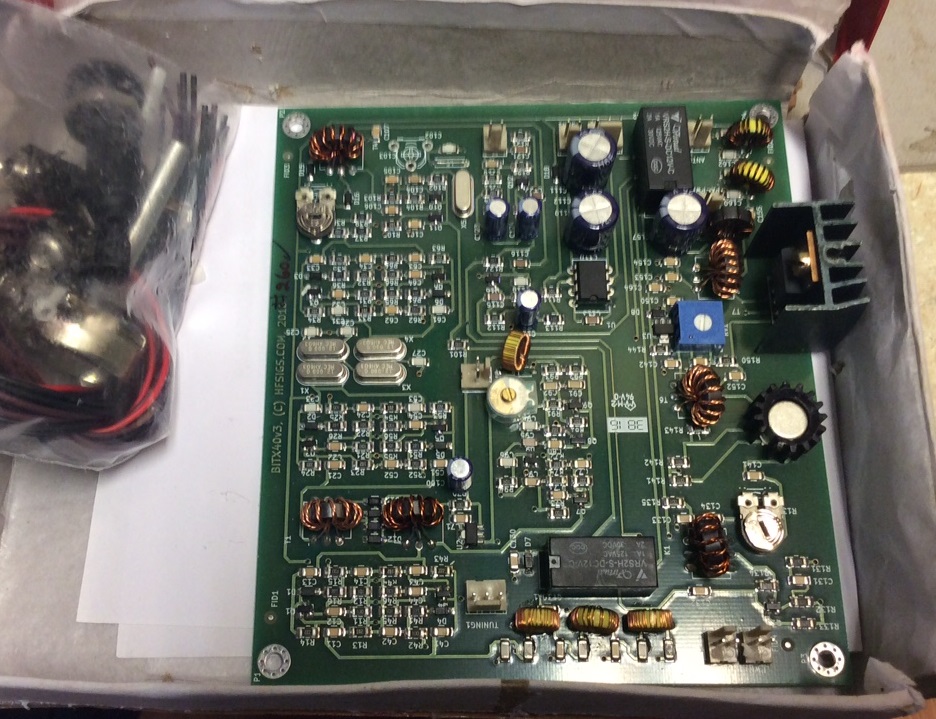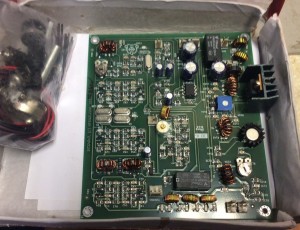The last two days I’ve spent laying out the receiver and common IF portions of the M1. I’m basically copying the Minikits suggested layout for the Hammond case. The aluminum sheet divides the inside of the case. The common IF subsystems and receiver modules fit on the top. The DDS and modulator components fit on the bottom. A number of the boards stack.
I purchased a coax crimping tool for RG-316. All the coax jumpers are of my own creation. This cuts down the cost as those jumpers can be quite expensive for quality ones. The SMA jacks and connectors are from China. The jacks rated for a whopping 500 connections! I doubt I’ll hit that ceiling for this project.
Soon, the receiver will be ready for power-on tests and alignment. The front-end mixer has a pad on the LO input, so a Si5351 at the lowest power level will be enough for to play with it.

